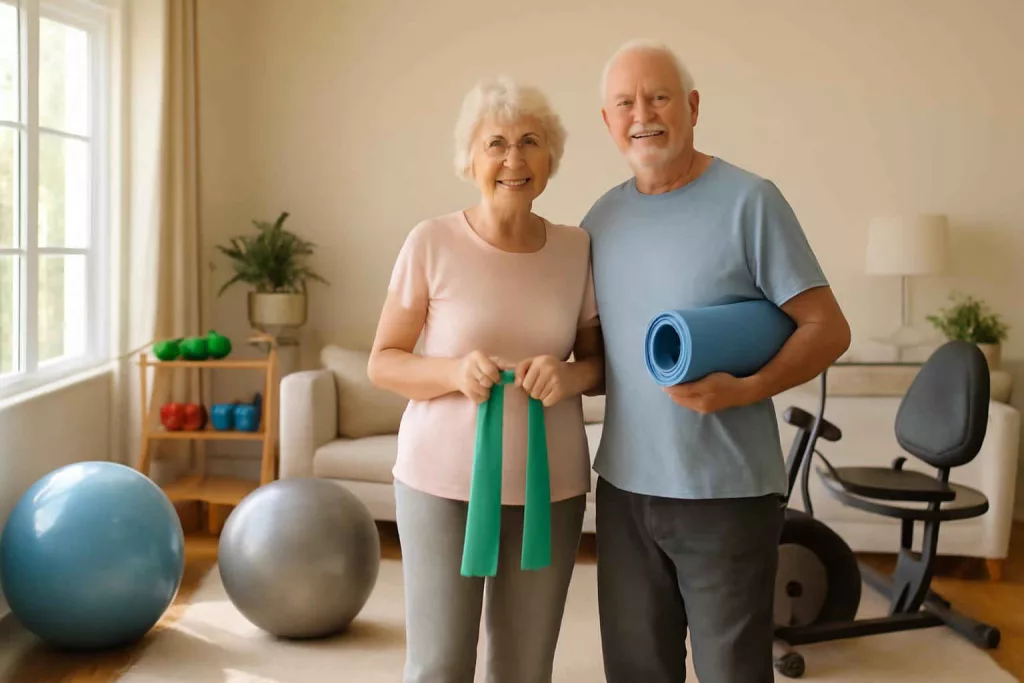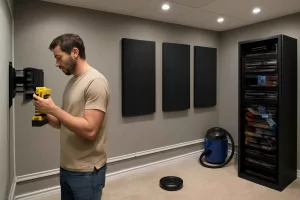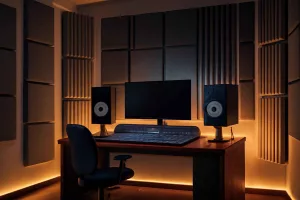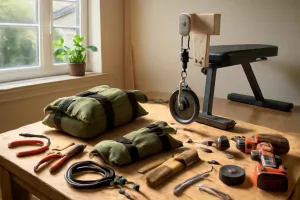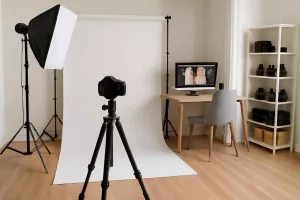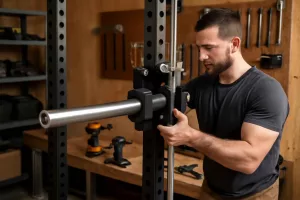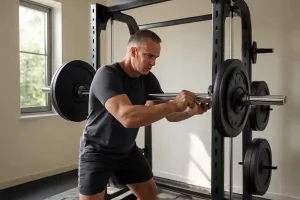Maintaining mobility, strength, and balance is crucial for seniors looking to stay active and healthy. With the right low-impact exercise gear for home, older adults can enjoy effective workouts without placing undue stress on joints or risking injury. This guide explores top tools, setup tips, and maintenance advice to help seniors create a safe, accessible workout space in any living area. Whether you’re exploring compact recumbent bikes or versatile resistance bands, you’ll find expert insights and product recommendations to support your fitness journey. Check out essential products on Amazon here.
Why Low-Impact Home Exercise Gear is Ideal for Seniors
As we age, our bodies go through changes that can affect our joints, muscles, and overall physical resilience. High-impact workouts—like jumping or running—may lead to discomfort or injury. That’s why many seniors prefer low-impact exercise options that reduce stress on the joints while delivering cardiovascular and strength-training benefits.
Choosing the appropriate exercise gear for home designed with seniors in mind supports consistency, safety, and motivation. Whether you have mobility limitations, a history of joint pain, or simply want a gentler workout, low-impact equipment allows you to build strength and improve balance without overexertion. Plus, having dedicated tools at home removes barriers like travel or gym memberships, making it easier to fit brief, regular sessions into daily routines.
Benefits of Low-Impact Workouts for Older Adults
Low-impact workouts help reduce wear and tear on cartilage, ligaments, and tendons. They also:
- Enhance cardiovascular health by gently raising heart rate.
- Improve muscle tone and strength with controlled resistance.
- Boost balance and flexibility, lowering the risk of falls.
- Promote mental well-being by reducing stress and improving mood.
Simple gear like resistance bands or stability balls can transform a small corner of your home into a versatile exercise station. If you’re curious about compact, multi-use tools, start exploring on Amazon here to find options reviewers love.
Safety Considerations for Home Workouts
Before introducing any new equipment, consult your healthcare provider or a physical therapist—especially if you have preexisting conditions such as arthritis, osteoporosis, or cardiovascular concerns. Proper technique is critical. Watch demonstration videos, consider a virtual session with a trainer, or reference reliable how-to guides. Warming up with gentle movements and stretching can further reduce injury risk.
Ensure your workout area is free of tripping hazards, with non-slip flooring and adequate space. Good lighting and proper ventilation also help maintain focus and safety. Keep emergency contact information easily reachable, and consider having a supportive chair or railing nearby during balance exercises.
Top Low-Impact Home Exercise Gear for Seniors
Selecting the right tools for a senior-friendly home gym hinges on versatility, adjustability, and ease of use. Below are essential categories of low-impact gear that deliver measurable results without straining joints.
Resistance Bands with Door Anchors
Resistance bands are a cornerstone of senior fitness due to their portability, affordability, and adaptability. High-quality bands come in sets with varying tension levels, allowing gradual strength progression as you become stronger. A door anchor attachment turns any sturdy door into a multi-directional workout station.
Key advantages include:
- Variable resistance levels for personalized intensity.
- Low joint impact, thanks to smooth tension curves.
- Compact storage in a drawer or kit bag.
Exercises such as seated rows, chest presses, lateral raises, and leg abductions can all be performed safely. Look for durable latex-free bands to avoid allergic reactions. To see a variety of top-rated resistance bands, visit this Amazon selection.
Adjustable Ankle and Wrist Weights
Adding light weights to your wrists or ankles is a subtle way to increase workout intensity without altering your routine significantly. Adjustable sets allow you to add or remove small weight packets to match your current fitness level.
Benefits include:
- Improved muscle tone in upper and lower limbs.
- Enhanced calorie burn during everyday activities.
- Enhanced bone density stimulation through gentle load-bearing.
Use ankle weights for leg lifts, sideways leg raises, or seated knee extensions. Wrist weights can add resistance during arm swings or simple marching in place. Always start with lower weights (1–2 lbs) and progress gradually to avoid strain.
Stability and Balance Tools
Maintaining balance is vital for seniors, reducing the risk of falls. Stability aids like balance pads, wobble boards, and stability balls engage deep core muscles and improve proprioception.
Popular choices:
- Balance Pads: Soft foam pads create an unstable surface for seated or standing exercises.
- Stability Balls: Use as a seated base for core workouts or gentle pelvic tilts.
- Wobble Cushions: Portable discs that fit on a chair or floor for dynamic balance training.
Incorporate simple movements like seated marches on a balance pad or gentle pelvic tilts on a stability ball. These tools strengthen lower back and abdominal muscles, directly supporting everyday movements.
Under-Desk Elliptical Machines and Pedal Exercisers
For those seeking cardiovascular activity without high-impact stress, under-desk ellipticals or pedal exercisers are ideal. These compact machines slide under a table or desk, enabling gentle cycling motions while seated.
Advantages:
- Continuous leg movement improves circulation and joint health.
- Quiet operation for home or office use.
- Multiple resistance settings to match fitness levels.
Look for units with non-slip foot pedals and easy-to-use tension dials. If desk-based workouts aren’t your preference, consider a small recumbent bike with back support to maintain upright posture. Browse highly rated under-desk pedals on Amazon here.
Smooth-Gliding Slide Discs
Slide discs are inexpensive, compact discs placed under your hands or feet to perform core and lower-body movements. They create low-impact friction that engages multiple muscle groups simultaneously.
Sample exercises:
- Mountain climbers with hands on discs to target the core.
- Side lunges by sliding one foot out to the side.
- Glute bridges with feet on discs to engage hips and lower back.
These discs fit easily into a drawer or pouch, making them perfect for travel or small spaces.
Compact Recumbent Bike or Pedal Exerciser
A recumbent bike provides back support and a comfortable seat, making it a go-to choice for seniors seeking low-impact cardio. Many models fold for storage and come with digital displays to track time, distance, and calories burned.
Look for features such as:
- Ergonomic seat with lumbar support.
- Adjustable seat positioning for leg length.
- Quiet magnetic resistance for smooth operation.
If a full recumbent bike is too large, a simple pedal exerciser placed on the floor can mimic the motion. This versatile tool can also be used for upper-body workouts by placing it on a table.
Space-Saving Setup Tips for Senior-Friendly Home Gyms
Creating an efficient workout zone doesn’t require dedicating an entire room. With smart planning and the right organization tools, you can carve out an exercise spot in your living room, bedroom, or even hallway.
Creating an Accessible Workout Zone
Choose a well-lit area near a stable surface—like a countertop or sturdy chair—for support during balance exercises. Lay down a non-slip exercise mat to define your space and protect floors. Keep oxygen-rich air flowing by working near a window or fan. A small side table can hold water bottles, towels, and devices for guided sessions. If you enjoy virtual classes, ensure your camera or tablet has a stable shelf at eye level.
Position heavier equipment such as recumbent bikes or under-desk ellipticals against a wall to prevent tipping. Place lighter gear—like resistance bands and weights—in a small basket or storage bin for quick access and tidy presentation.
Storage Solutions to Keep Gear Organized
Proper gear storage prevents clutter and ensures safety by eliminating tripping hazards. Consider installing a wall-mounted rack or hooks for bands and cords. For smaller spaces, a folding mesh organizer can hang on a closet door to hold mats, towels, and small weights.
Home exercise gear can borrow organization ideas from workshop setups. For rugged storage, view our guide on DIY rack organization and adapt pegboard panels to hang resistance bands or stability balls. Or check out our tips on slatwall storage solutions for inspiration. Clear containers with labeled sections make it easy to find ankle weights or slide discs in seconds.
Maintaining and Cleaning Your Home Exercise Gear
Clean, well-maintained equipment enhances safety, hygiene, and longevity. Sweat and dust buildup can degrade materials over time, so a regular maintenance routine is essential.
Cleaning Best Practices
For resistance bands and slide discs, wipe down with a mild detergent mixed in warm water, then air-dry completely before storage. Stability balls can be cleaned with a gentle, non-abrasive cleaner. Ensure no cleaning residue remains to prevent slipping during use.
Under-desk machines and recumbent bikes often accumulate dust inside moving parts. Use a soft cloth or a can of compressed air to clear vents and tension mechanisms. Check manufacturer guidelines before applying lubricant to avoid voiding warranties.
Replacing Worn Components
Inspect bands, discs, and adjustable weights every two months for signs of cracking, tearing, or fading. Replace any item showing wear to maintain optimal resistance and prevent snapping during exercise. Many gear sets offer replacement parts—keep spare bands and weight packets on hand.
For electronic machines, monitor display panels and tension controls. If the unit stops responding or produces unusual noises, contact customer support for replacement instructions or professional servicing.
How to Choose the Right Gear for Your Fitness Level
Your current mobility, strength, and endurance levels should guide gear selection. If you’re new to exercising or recovering from an injury, begin with minimal resistance bands and light ankle weights. Track progress by gradually changing band tension or adding small weight increments.
Assessing Mobility and Strength Baselines
Simple home assessments—like a chair stand test or seated arm raise—can help determine starting resistance levels. Record how many repetitions feel challenging yet manageable. Use the next few sessions to refine intensity, ensuring you’re working at 50–70% of your maximum capacity.
Balance tests, such as standing on one leg for 10–20 seconds, can indicate which stability tools to prioritize. If you find yourself wobbling easily, spend extra time with balance pads or gentle single-leg stances.
Consulting Healthcare Professionals
Prioritize safety by discussing your exercise plan with your doctor or physical therapist. They can recommend modifications based on any chronic conditions or joint concerns. If you have a home health aide, involve them in setting up equipment to guarantee correct installation and support during early workouts.
Many seniors benefit from virtual coaching sessions to master form and technique when using new tools. As you gain confidence, you can transition to self-guided routines knowing your foundation is secure.
Conclusion
Investing in the right low-impact exercise gear for home empowers seniors to maintain active, fulfilling lifestyles. From versatile resistance bands to compact recumbent bikes, these tools offer safety, adaptability, and measurable progress. By creating an organized workout zone, practicing proper cleaning habits, and consulting professionals, you’ll enjoy effective routines tailored to your needs. Ready to start? Explore curated selections on Amazon here and take the first step toward a stronger, more balanced you.
